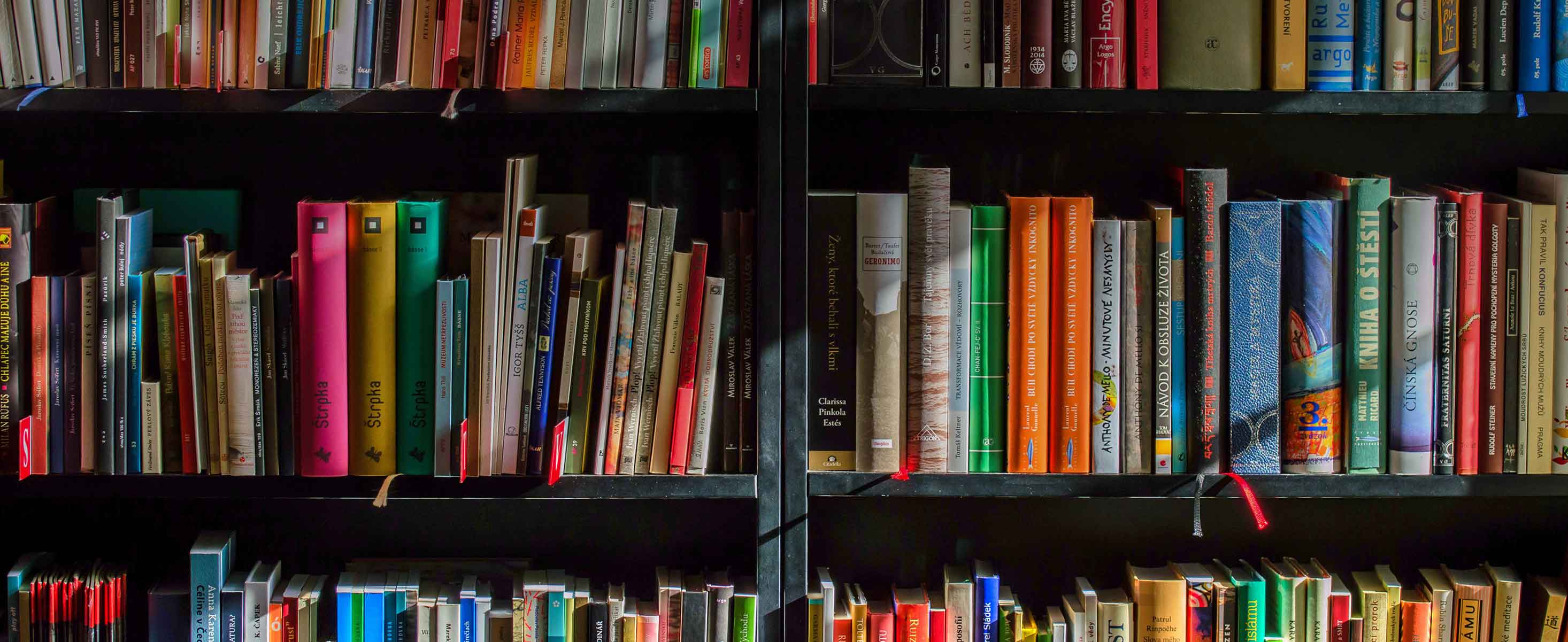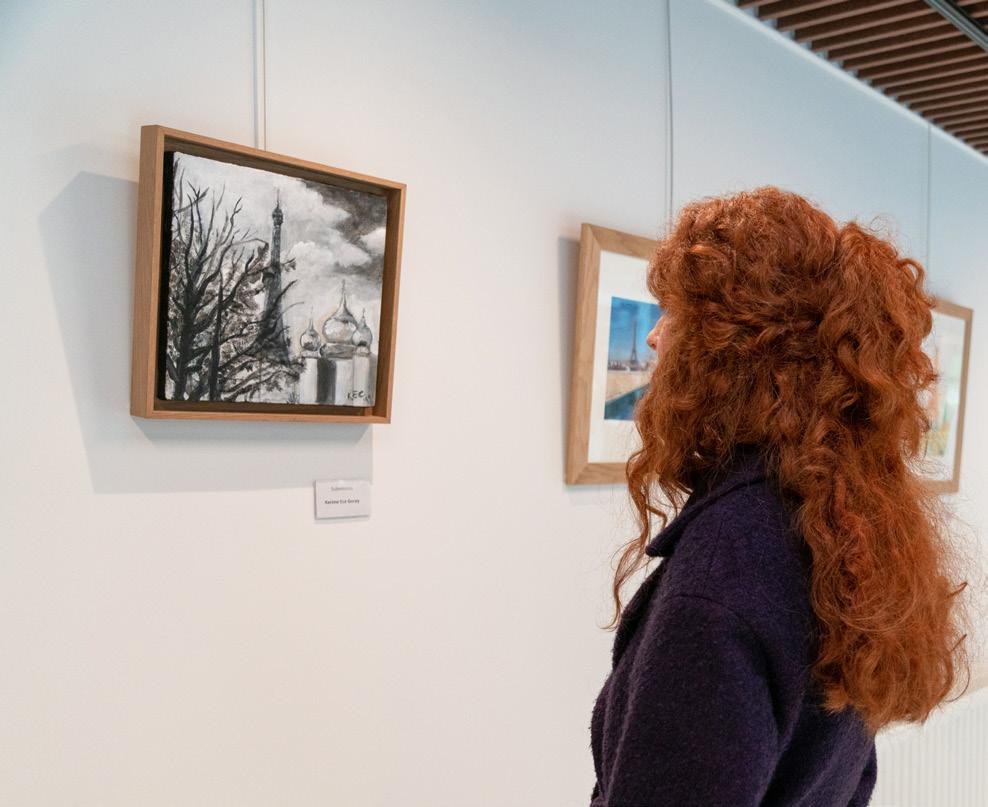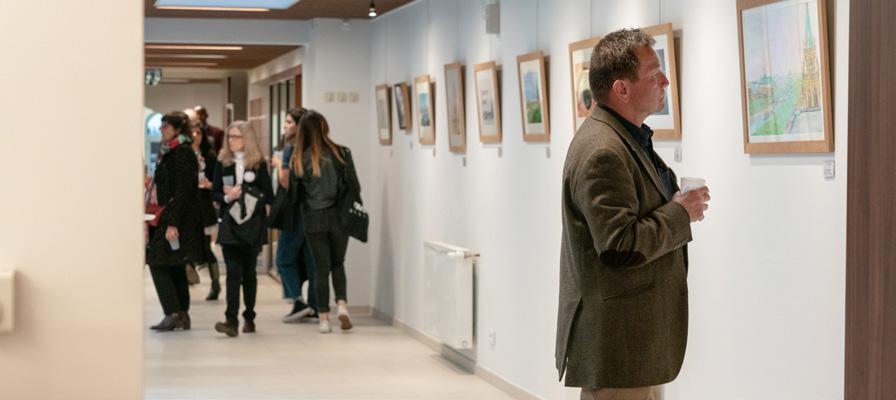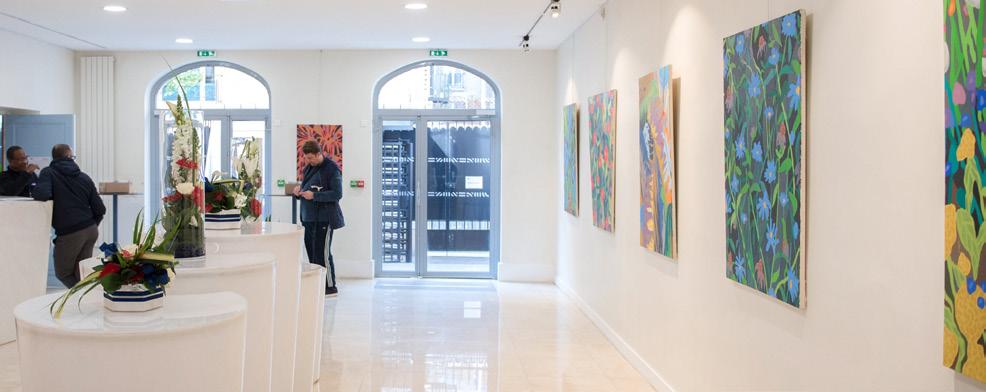
4 minute read
The Future of the Arts at AUP
THE FUTURE OF THE ARTS AT AUP
The Quai d’Orsay Learning Commons offers new ways for students to engage in creative pursuits at the University and beyond. This resurgence of artistic life at AUP continues thanks to the next exciting redevelopment project: The Monttessuy Center for the Arts.

An exhibition in the extended Fine Arts Gallery of the Quai d’Orsay Learning Commons
The American University of Paris has a long and rich history of artistic endeavor centered on its Department of Art History and Fine Arts. Art history has been taught at AUP, or at what was known at the time as the American College in Paris, since the 1960s, though recently the department has lacked a proper home on campus. Thankfully this situation is changing, in part due to the library’s move from the Monttessuy building to the Quai d’Orsay Learning Commons. The library’s former home will become the next step in AUP’s campus redevelopment plan, leading to the creation of The Monttessuy Center for the Arts.
It’s hard to miss the impact of artistic pursuits on AUP life; classrooms and office spaces are filled with students’ work. Professor Jonathan Shimony, who joined the University in 2007, curates these pieces as AUP’s Coordinator for Fine Arts. His work unites students, faculty and staff via multiple creative projects: “I wear a lot of hats,” he admits. As well as managing a collection of over 500 original works, Shimony teaches fine arts, helps run a university-wide art club – open to all students – and curates AUP’s Fine Arts Gallery. Thanks to the new Quai building, the gallery now extends from the Combes Student Life Center all the way along the glass atrium of the Student Life and Learning Commons. It allows students, no matter their major, to engage with fine arts as part of a global liberal arts education.

Guests browsing artwork during the opening celebrations in March 2019
The gallery’s central position – perfectly placed to capture passing foot traffic – ensures that artistic opportunities on campus involve everyone at the University. Students, faculty and staff regularly attend vernissages in the space; these private viewings offer unprecedented access to professional artists, though the gallery also exhibits students’ classwork. “The point of the gallery is to get our community interested in art, to keep our community looking at fresh, interesting works,” explains Shimony, who also hopes to include permanent sculpture exhibits in the newly developed space. The glass roof of the atrium fills the gallery with natural light and provides views of the Vertical Garden, making it the perfect place to stop and peruse the latest collection.
Shimony is the University’s second Coordinator for Fine Arts, following on from his predecessor and founder of the Fine Arts Gallery, Professor Emeritus Ralph Petty. “He wanted to show artists whose work was good but for whatever reason was not being exhibited in commercial galleries or museums,” explains Shimony, noting that there was also an element of social conscience to the choice of exhibits. He has continued in Petty’s tradition through his own curation; recently, the gallery highlighted the work of Syrian artists with refugee status in France.
In addition to its own shows, AUP provides unparalleled access to museums, churches and other architectural wonders thanks to its Paris location. Students in the Department of Art History and Fine Arts receive a free pass to the city’s exhibitions and cultural monuments, and professors strive to provide innovative ways to experience art both in and beyond the City of Light. “I’m sure you’ll agree that people don’t just come to Paris for the baguettes, they come for the art,” says Shimony. The Cultural Program pushes this approach even further, allowing students to take in the stained glass at Chartres or the stucco work at Fontainebleau, with study trips extending as far afield as Naples and Berlin. “Paris is perfectly placed to see the splendors of Europe.”

The arts at AUP represent a University in constant evolution, mirroring wider campus development by striving to improve available learning opportunities. This is reflected in the growth of the department’s two majors, art history and fine arts, which have seen a collective 270% increase in interest over the last five years. The time has come, therefore, for a development initiative that will allow the arts at AUP to complete their renaissance. If the Quai is the flagship, Monttessuy will be the figurehead, pointing the University proudly toward the future. The building is situated right next to the Eiffel Tower and the Champ de Mars, which Shimony notes offers unique opportunities for painters and sketchers.
Though the city itself is often a classroom, on-campus facilities are just as integral to maintaining a healthy artistic culture at the University; students need well-equipped work spaces to properly put theory into practice. The Monttessuy Center for the Arts will offer two purpose-built classrooms, allowing sculptors, painters and printmakers to work independently and keep their materials separate. New courses, such as Advanced Painting, will only be possible in this expanded space. AUP’s first auditorium will offer increased scope for visual media performances, plays and concerts on site, widening artistic life yet further. To make this vision a reality, the University is launching a campaign for alumni support. Shimony believes that the whole community – including alumni – will be able to benefit from an expanded cultural events program: “I really hope that it will become a center for AUP where everyone will want to come over and participate.”




